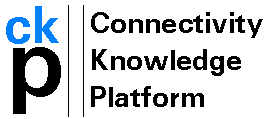
A Made IT project
http://www.made-it.com
info@made-it.com
 |
A Made IT projecthttp://www.made-it.com info@made-it.com |
Introduction
The oldest installed cables are copper and it is still the most used material for connecting devices. Almost every topology has its copper version. Since a propper handling of those cables is essential for a good connection we will discuss some basic copper concepts plus the difference between the different cable types.
This document tells you more about the general features of copper cables. If you want to know more about a specific cable type, follow the beneath links:
General
First off all, our advise is to read the entire document if you are new to working with copper cables. This way you get a general feel for what a cable is and what is essential. The subjects covered in this document are:
The spool function
Some people use cable on a spool when testing a cable, before installing. But because a cable behaves differently when coiled this is not the way to do it.
What happens is that the current flowing through the wires creates a magnetic field through the center of the spool. This magnetic field tries to keep any change in the current to a minimum and thus influences the flow of the current.
Out-, indoor cables
The difference between indoor and outdoor cable is not always visible, but there is an important difference. The jackets of an indoor cable are made of PVC or plenum. These jackets are only suitable for office environments or office like environments. Don't use the outside, not even in a conduit (condensation will erode the jackets). Instead buy special outdoor cable. These cables are mostly enforced and have a jacket that can withstand water, sunlight and all other weather influences.
Signal loss
There are different kinds of cable loss. The spool function is already described above. Here follow some others:
Resistance
Every cable has some resistance. This is caused by electrons running around who bump against the electrons carrieing the current. This generates heat. Resistance can best be viewed as water running through a garden hose. The width of the hose greatly decides how much water can flow through the hose. Also if there are kinks in the hose less water can get through. The same holds for current through copper cables.
If the resistance of a cable is too high, no signal will reach the other end. This means also for every signal there is a maximum cable run so you have enough signal at the far-end that can be detected by a receiver.
Capacitance
Capacitance has to do with the electrical interaction in a cable. Let's assume we have a coaxial cable.

The shield is mostly a braided or foil shield, but it could be both too. The current flowing through the core induces signal on the shielding, and current flowing through the shield does the opposite to the core. To get in more detail. When there is a negative charge on the shield it will attrack positive charged partikels from the core.
This interaction causes signal loss. A right connection of the cable is important to minimize this effect.
Attenuation
Attenuation is loss caused by the the so called 'skin effect' and 'di-electric loss'.
Skin effect is the tendancy of current to flow close to the surface of a copper cable. This reduces the actual used surface of a cable and thus increases the resistance 'viewed' by the current. The higher the frequency the greater the attenuation.
Di-electric loss is loss caused by the jacket. A jacket should be completely electrical inactive, but is not. PVC will have some charge. (Rub a piece of plastic against your sleeve and hold it close to your hair.) This electrical activeness has its effect on the signal flowing through the cable and causes some loss.
Near-End Crosstalk (NEXT)
NEXT is the influence of one copper wire (or pair) on to the other. This is especially important in UTP and STP cables. What happens is that signal induces some energy on the signal in the other wire and thus weaking the original signal. It causes noise.
Noise is all kinds of signal that is not part of the original transmitted information.